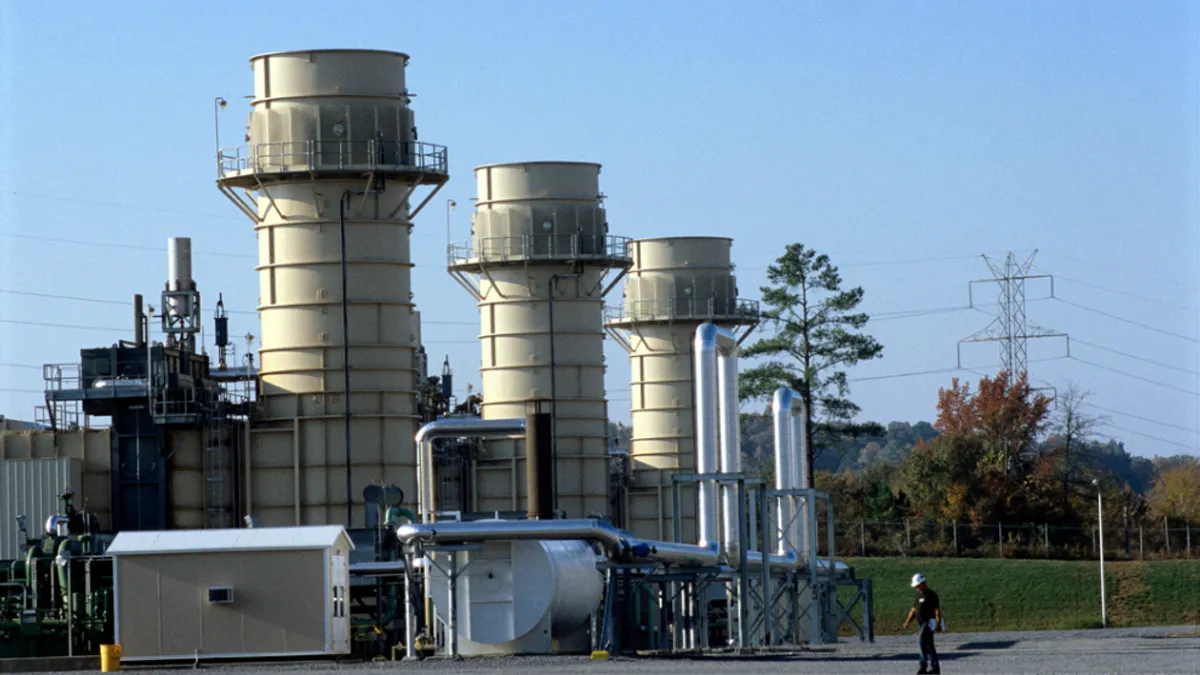Dive Brief:
- Worldwide energy demand surged 2.3% last year, a pace the International Energy Agency said was the fastest in this decade, driven by a strong global economy and the rise in heating and cooling load.
- Natural gas accounted for 45% of the rise in consumption, the group concluded in its Global Energy and CO2 status report, released last month. Fossil fuels met almost 70% of the new demand, which led to a 1.7% increase in global carbon emissions.
- Renewables, including hydropower, increased by 4% last year and now account for almost 25% of global power output — second after coal. While coal's overall place in the energy mix continues to decline, demand for coal has now risen slightly for two years.
Dive Insight:
Renewable energy is growing around the world, but not fast enough to offset the impacts of rising power demand.
As a result, global energy-related CO2 emissions reached an all-time high of 33 gigatonnes in 2018, with 10 coming from coal.
"The majority of coal-fired generation capacity today is found in Asia, with 12-year-old plants on average, decades short of average lifetimes of around 50 years," the IEA said in its report.
IEA Executive Director Fatih Birol called the growth in global energy demand "extraordinary."
"Last year can also be considered another golden year for gas, which accounted for almost half the growth in global energy demand," Birol said in a statement. "But despite major growth in renewables, global emissions are still rising."
China, the United States and India accounted for almost 70% of the rise in global energy demand. IEA observed that the United States "saw the largest increase in oil and gas demand worldwide." U.S. gas consumption rose 10% from the previous year, "the fastest increase since the beginning of IEA records in 1971," according to the report.
For some perspective, IEA estimated the annual increase in U.S. demand last year was equivalent to the United Kingdom's current gas consumption.
Globally, the switch from coal to gas accounted for more than 20% of the rise in gas demand.
Energy efficiency is a vital source of carbon abatements in the energy sector, but IEA found that improvements have now slowed for three consecutive years. Global primary energy intensity fell by 1.3%, but that was a smaller improvement than in other years.
IEA cited "a number of factors" for the slowdown. "Among these is the static energy efficiency policy environment in 2018, with lackluster progress on implementing new energy efficiency policies or increasing the stringency of existing policies," the report said.
Only about one-third of final energy use is covered by mandatory energy efficiency policies, IEA said. In the United States, President Trump has been rolling back energy regulations and attempting to freeze efficiency standards. In February, Trump proposed to roll back energy efficiency standards on some types of light bulbs.
The American Council for an Energy-Efficient Economy identified the slowdown last year, noting that global energy intensity fell by 2.5% in 2011, but the rate of improvement slowed to 1.7% in 2017. Another difficulty, the group said, is finding ways to fund efficiency projects which are expensive and can require years to recoup investments.















